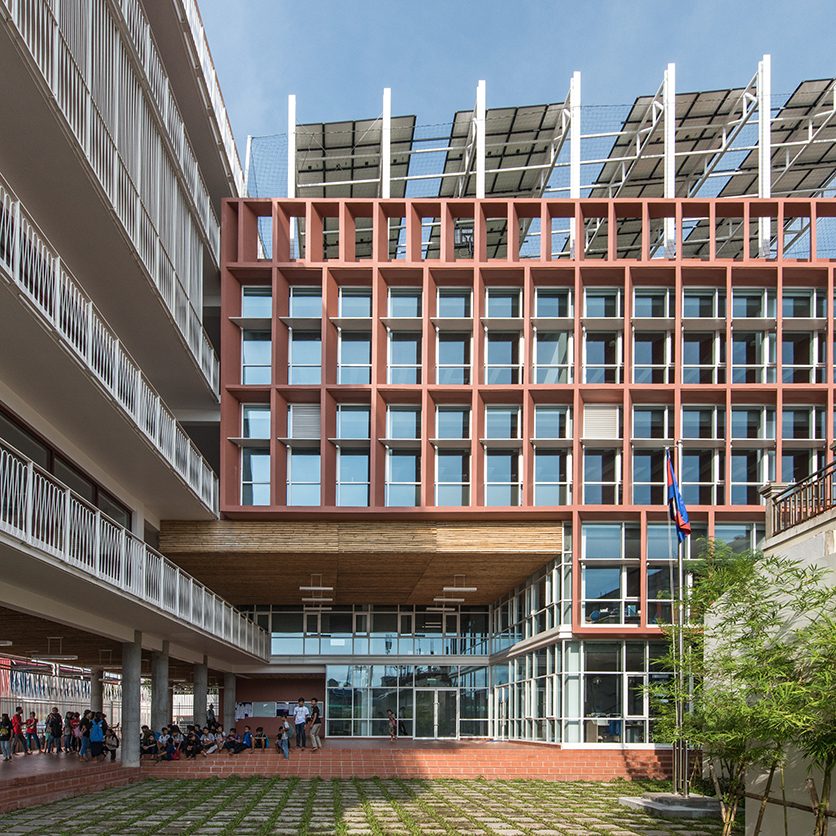ArchDaily: Beyond Angkor Wat: Cambodia’s New Cultural Architecture
Eric Baldwin – ArchDaily
The Kingdom of Cambodia has a rich history of Khmer architecture. Built from the latter half of the 8th century to the first half of the 15th century, these structures are embodied by the iconic Angkor Wat temple complex. But new architecture is being built throughout Cambodia, projects that reinterpret culture and tradition to create modern spaces for contemporary life.
While the country is mostly known for its religious architecture and Angkorian buildings, these projects have survived because they were built from stone. The builders and sculptors were influenced by Hinduism and Buddhism, and they have distinctive qualities like courtyards, walled enclosures, and a central shrine. Dwellings and residences were typically built from wood, and as such, many have not survived over time. For more public buildings, these were decorated in the style of the Khmer and use the garuda motif.
By comparison, modern buildings from the 1950s and 60s are known as New Khmer Architecture. The style was created after the country’s independence from France when architects like Vann Molyvann began exploring a new aesthetic. Today, new projects follow a similar approach as they look to rethink vernacular forms and construction techniques. From the country’s capital city of Phnom Penh to more rural sites, the following projects focus on Cambodia’s modern movement with a close relationship to the country’s tropical climate and landscape.
Read the full article here: Beyond Angkor Wat: Cambodia’s New Cultural Architecture

